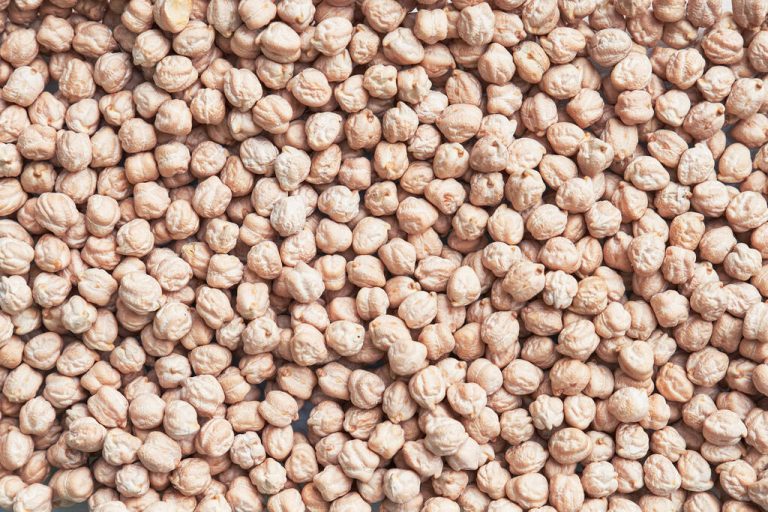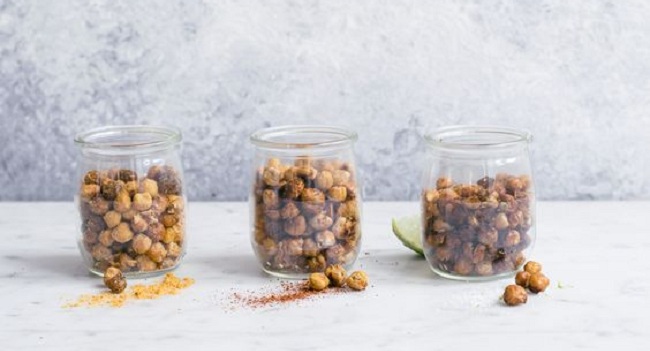The nutritional values of chickpeas turn the inconspicuous legumes into real powerhouses. Find out more about calories, nutritional values and what makes chickpeas healthy here.
We humans have been growing chickpeas as a crop for around 8,000 years. And the legumes are still extremely popular as small all-rounders. Their mild, nutty flavor suits a variety of cuisines – whether Mediterranean or Asian. They can also be processed in a variety of ways, for example to make hummus or falafel.
In addition to its culinary advantages, the chickpea scores with its nutritional values and the many healthy ingredients. This makes them an enrichment for every menu. Chickpeas are particularly valuable for a plant-based diet in which legumes replace animal protein.

Chickpeas: nutritional values at a glance
Chickpeas are usually available in two varieties: dried or cooked and canned.
100 grams of dried chickpeas have the following nutritional values:
Energy: 378kcal
Fat: 6g
Carbohydrates: 63g
Egg white: 20.5 g
100 grams of cooked chickpeas have these nutritional values:
Energy: 128kcal
Fat: 1.6g
Carbohydrates: 20.8g
Protein: 8g
There is a lot of protein in chickpeas. They also contain the essential amino acids lysine and threonine – the body needs these in order to produce new proteins. This is what makes legumes so popular in a vegetarian or vegan diet.
With over 300 kilocalories per 100 grams (dried), chickpeas are not very low in calories. But in vegetarian or vegan dishes, they serve as a healthy substitute for meat and as an important source of energy.
Chickpeas also contain a lot of fiber: 100 grams of dried chickpeas contain 12.2 grams of fiber. This covers almost 50 percent of the amount of fiber that we should eat every day. Fiber fills you up, regulates blood sugar levels, lowers cholesterol levels and is important for a healthy intestinal flora.

Nutrients in chickpeas: vitamins, minerals and trace elements
In addition to the nutritional values of chickpeas mentioned above, other ingredients are also important. Chickpeas contain a large number of vitamins and minerals, such as:
Vitamin A: Vitamin A ensures good vision and is important for a functioning immune system and strong bones.
Vitamin B1: Vitamin B1 is essential for the functioning of our nervous system.
Vitamin B6: It helps to build proteins in the body, forms hemoglobin and is involved in the growth and development of the body during pregnancy.
Vitamin C: strengthens the immune system and ensures that the body can protect itself against free radicals.
Vitamin E: It has an antioxidant effect and thus protects against free radicals, which, among other things, can contribute to premature skin aging.
Iron: Iron is important for oxygen to be transported through the blood.
Zinc: The substance accelerates wound healing and strengthens the immune system.
Magnesium: It has an anti-inflammatory effect, builds bones and is important for a strong heart muscle.
Conclusion: The nutritional values of chickpeas show: The small legumes are real powerhouses and are particularly good in plant-based main dishes. Because they contain so much protein, chickpeas can be used as a meat substitute. So how about a couscous salad with chickpeas or a beetroot spread with chickpeas? The liquid from canned chickpeas can also be used to make aquafaba, a vegan egg white alternative.











